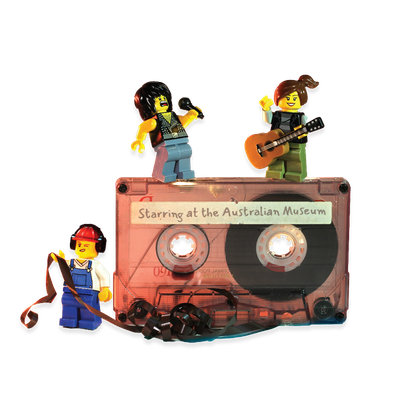Your search returned 2817 results
By Page Type
By Tag
- fish (966)
- blog (696)
- fishes of sydney harbour (401)
- First Nations (297)
- Blog (236)
- AMRI (169)
- archives (164)
- Eureka Prizes (145)
- Aboriginal and Torres Strait Islander (135)
- insect (126)
- Ichthyology (124)
- geoscience (109)
- minerals (102)
- climate change (99)
- podcast (94)
- Fish (91)
- Anthropology (89)
- International collections (80)
- Minerals Gallery (78)
- wildlife of sydney (78)
- Labridae (77)
- frog (73)
- gemstone (70)
- photography (65)
- history (63)
- Mollusca (60)
- gem (59)
- staff (59)
- Birds (56)
- Gems (56)
- Indonesia (56)
- education (55)
- shark (55)
- AMplify (54)
- people (53)
- earth sciences (50)
- past exhibitions (50)
- exhibition (49)
- Gobiidae (48)
- sustainability (46)
- Pomacentridae (45)
- Serranidae (44)
- lifelong learning (42)
- science (42)
- Earth and Environmental Science (41)
- Syngnathidae (41)
- Ancient Egypt (40)
- Bali (40)
- bird (40)
- dangerous australians (40)
-
Great Cormorant
https://australian.museum/learn/animals/birds/great-cormorant/The Great Cormorant is the largest of the Australian cormorants and is one of the largest in the world.
-
Gouldian Finch
https://australian.museum/learn/animals/birds/gouldian-finch/The Gouldian Finch is the only grassfinch that nests exclusively in tree hollows or holes in termite mounds.
-
Glossy Black-Cockatoo
https://australian.museum/learn/animals/birds/glossy-black-cockatoo/Large dull black body, bulbous bill, red tail panels.
-
Galah
https://australian.museum/learn/animals/birds/galah/The name Galah comes from the Yuwaalaraay language word “gilaa”. In Australia, we call people galahs if they are acting silly or do something foolish. The Yuwaalaraay language area extends across north west NSW on the Barwon River into south west Queensland along the Culgoa and Balonne Rivers.
-
Freckled Duck
https://australian.museum/learn/animals/birds/freckled-duck/During the breeding season, the male Freckled Duck's bill becomes crimson at the base.
-
Flame Robin
https://australian.museum/learn/animals/birds/flame-robin/Flame Robins are the only robins to form flocks in winter.
-
Emu
https://australian.museum/learn/animals/birds/emu/The name 'emu' is not an Aboriginal word. It may have been derived from an Arabic word for large bird and later adopted by early Portuguese explorers and applied to cassowaries in eastern Indonesia. The term was then transferred to the Emu by early European explorers to Australia.
-
Eastern Whipbird
https://australian.museum/learn/animals/birds/eastern-whipbird/Black head and breast, white patch on side of face, olive-green with a long tail.
-
Eastern Spinebill
https://australian.museum/learn/animals/birds/eastern-spinebill/The Eastern Spinebill sometimes hovers like a hummingbird when feeding on the nectar from flowers. Most Australian honeyeaters feed on flowers from a perched position.
-
Dollarbird
https://australian.museum/learn/animals/birds/dollarbird/Dark brown body, blue-green wings and back, short orange red bill.
-
Discover more
2025 Australian Geographic Nature Photographer of the Year
Special exhibition
Now open -
Discover more
Unfinished Business
Special exhibition
Now open -
Discover more
Wansolmoana
Permanent exhibition
Open daily -
Find out more
Burra
Permanent kids learning space
10am - 4.30pm![]()
-
Discover more
Minerals
Permanent exhibition
Open daily![]()




